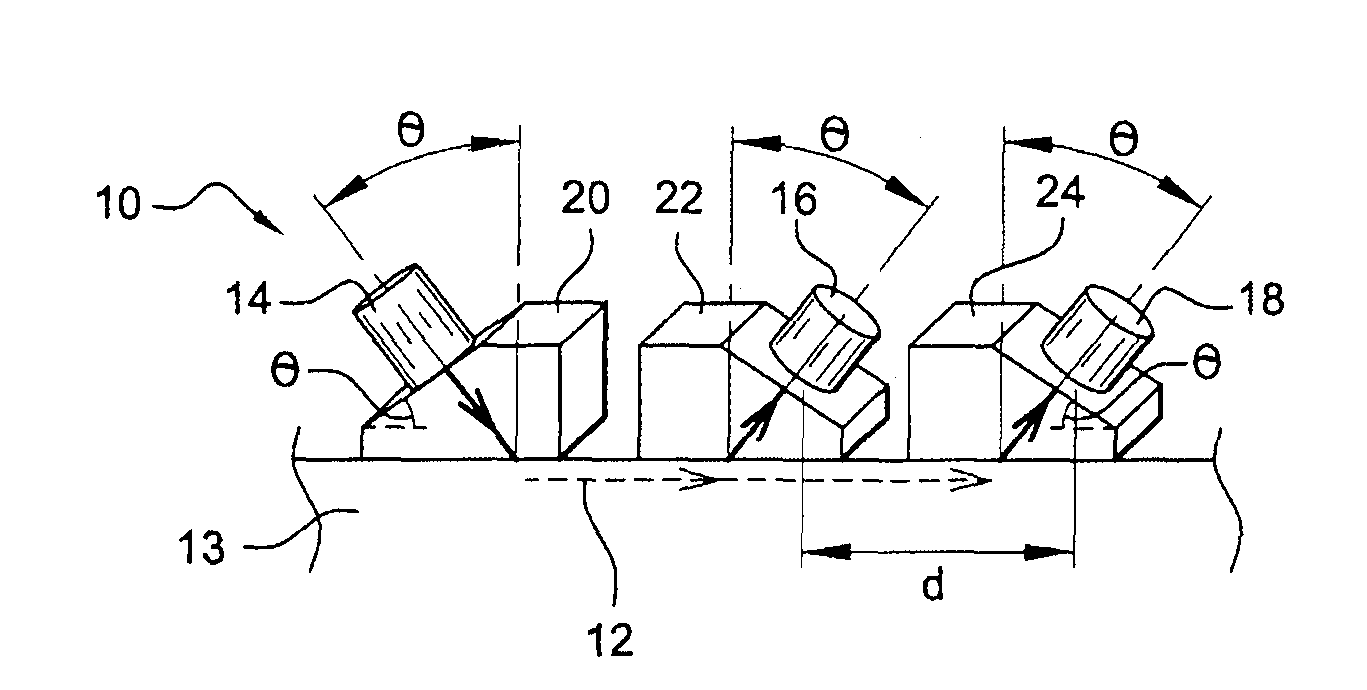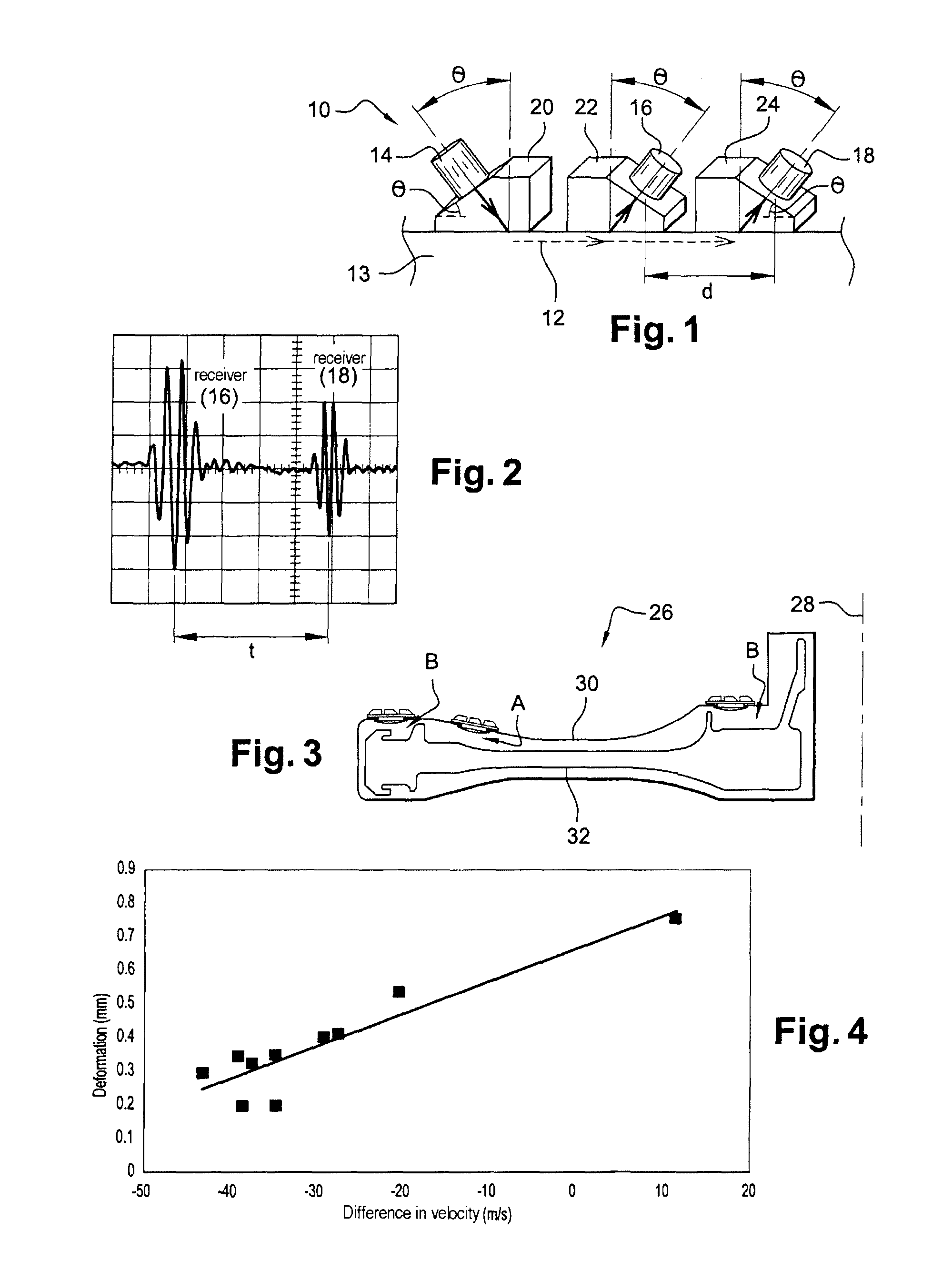Ultrasound prediction of workpiece deformation
a workpiece and ultrasonic technology, applied in the direction of instruments, heat measurement, specific gravity measurement, etc., can solve the problems of increasing the number of machining operations, requiring significant additional costs, and unable to deduce the most suitable procedure from the experience gained in machining, etc., to achieve the effect of simple implementation, effective and effectiv
- Summary
- Abstract
- Description
- Claims
- Application Information
AI Technical Summary
Benefits of technology
Problems solved by technology
Method used
Image
Examples
Embodiment Construction
[0032]Reference is made first of all to FIG. 1 which depicts a device 10 for measuring the velocity of an ultrasound subsurface longitudinal wave 12 (represented as dotted arrows) propagating through a workpiece 13. The device comprises an emitting transducer 14 and two receiving transducers 16, 18 positioned on coupling pieces 20, 22, 24 in such a way that their ultrasound axes are perpendicular to an inclined plane of their coupling pieces. The receiving transducers are separated by a known distance d. The inclined plane of the coupling piece 20 of the emitting transducer 14 makes an angle θ with the surface of the workpiece and this plane is directed in the counterclockwise direction. The inclined planes of the coupling pieces 22, 24 of the receiving transducers 16, 18 make the same angle θ with the surface of the workpiece and are directed in the clockwise direction. Thus, the ultrasound axis of each of the transducers also makes an angle θ with the surface of the workpiece. A c...
PUM
| Property | Measurement | Unit |
|---|---|---|
| angle | aaaaa | aaaaa |
| angle | aaaaa | aaaaa |
| central frequency | aaaaa | aaaaa |
Abstract
Description
Claims
Application Information
 Login to View More
Login to View More - R&D
- Intellectual Property
- Life Sciences
- Materials
- Tech Scout
- Unparalleled Data Quality
- Higher Quality Content
- 60% Fewer Hallucinations
Browse by: Latest US Patents, China's latest patents, Technical Efficacy Thesaurus, Application Domain, Technology Topic, Popular Technical Reports.
© 2025 PatSnap. All rights reserved.Legal|Privacy policy|Modern Slavery Act Transparency Statement|Sitemap|About US| Contact US: help@patsnap.com


